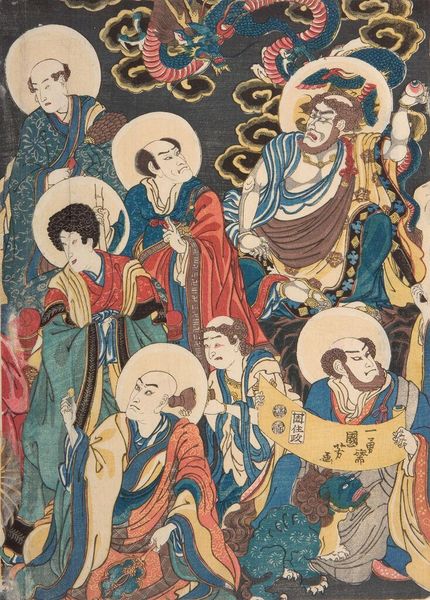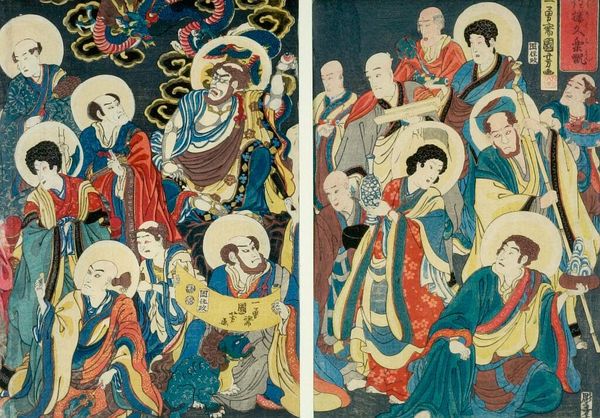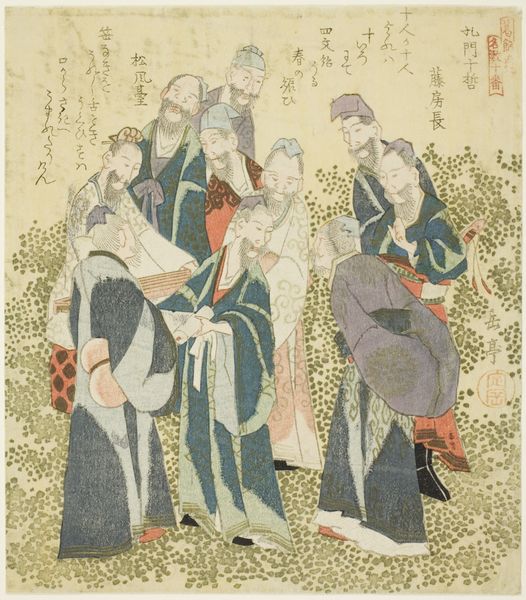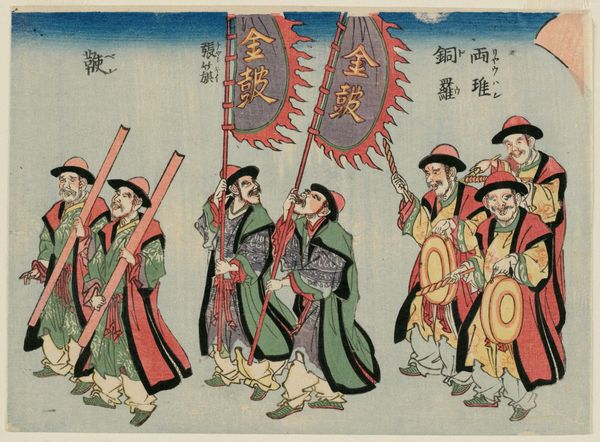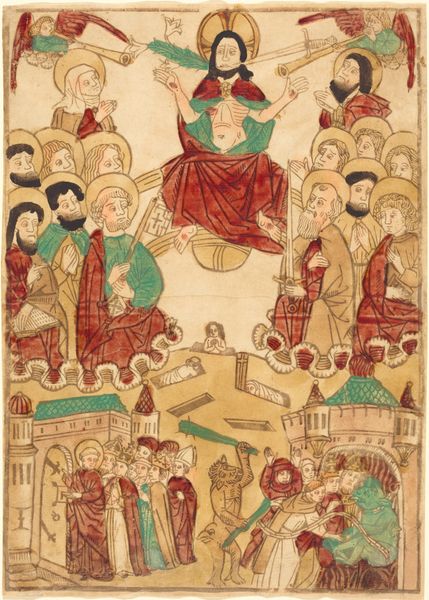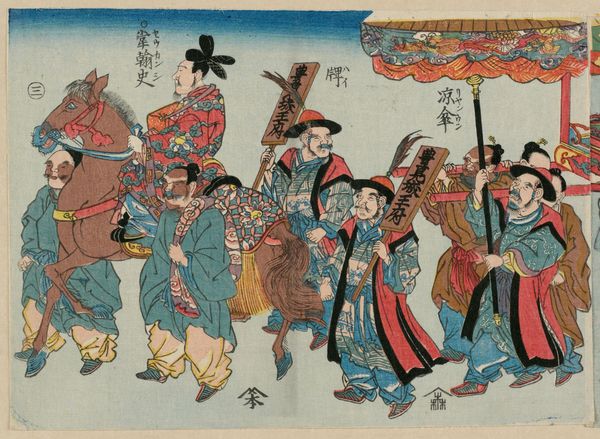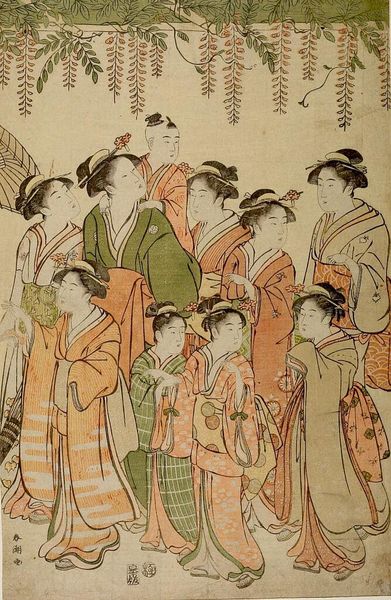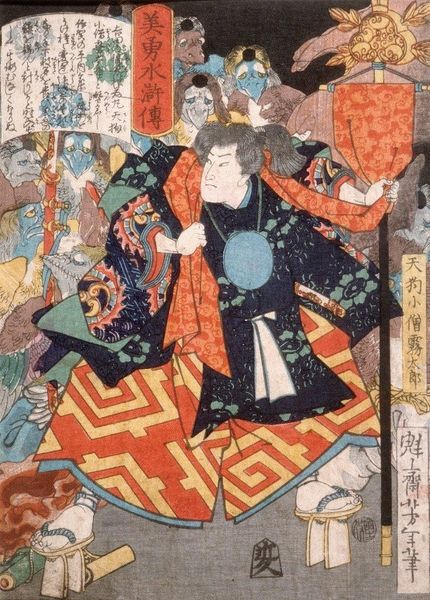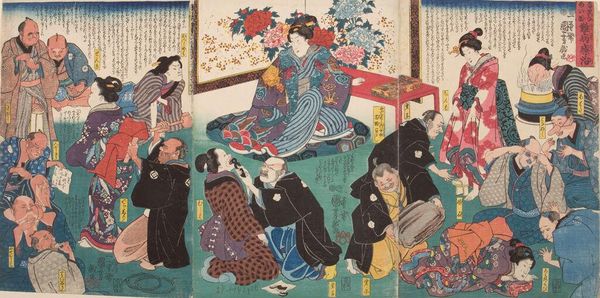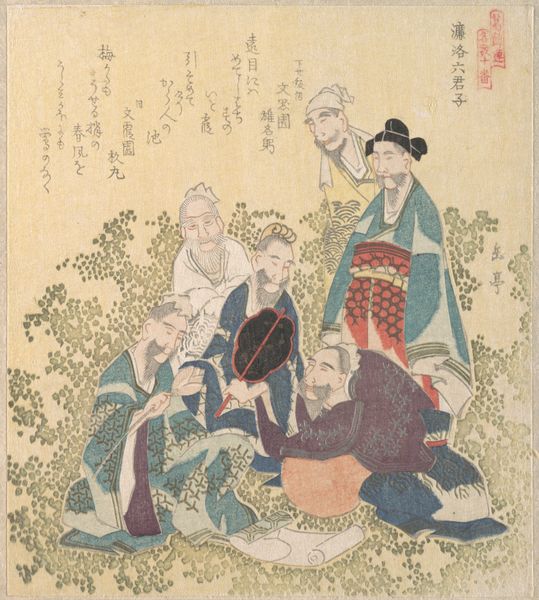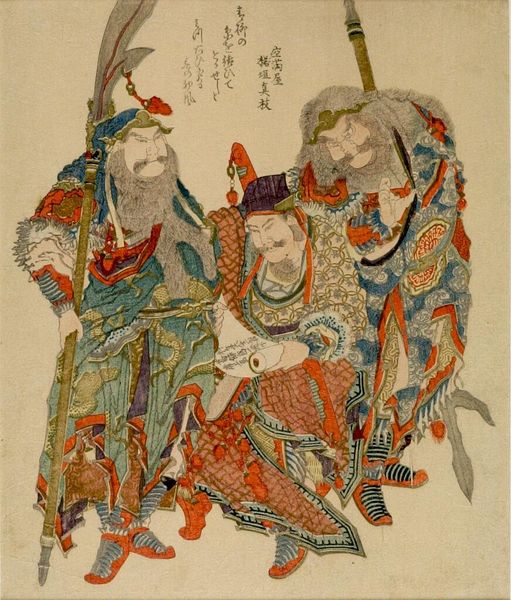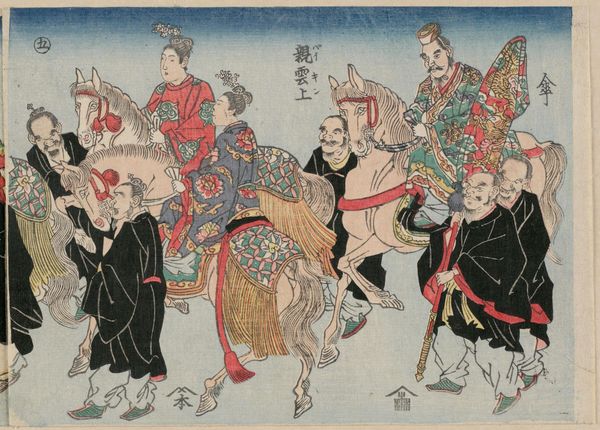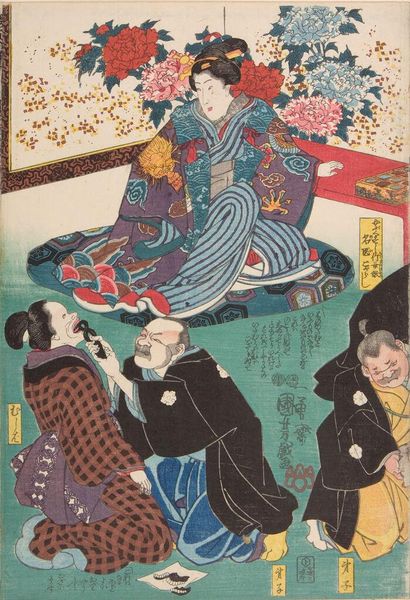
Actors as the Sixteen Arhats (Mitate: JÅ«roku Rakan) c. late 19th century
0:00
0:00
Dimensions: paper: H. 35.6 x W. 25 cm (14 x 9 13/16 in.)
Copyright: CC0 1.0
Editor: This woodblock print by Utagawa Kuniyoshi depicts Actors as the Sixteen Arhats. The figures, with their theatrical expressions, seem caught between the sacred and the profane. How do you see this tension playing out in the work? Curator: That's a keen observation. Kuniyoshi often used his art to comment on social issues. By depicting actors in the guise of Arhats, he's potentially blurring the lines between religious authority and the performative aspects of power. The Arhats themselves represent enlightenment, but the choice of actors makes us question authenticity and representation. Editor: So, it's about questioning established hierarchies? Curator: Exactly! Kuniyoshi encourages us to consider how societal roles are constructed and performed, challenging rigid interpretations of identity and belief. What does this blending of the sacred and the mundane suggest about the fluidity of social roles in 19th-century Japan? Editor: I never thought about it that way before. It adds a whole new layer of complexity. Curator: Indeed. It's a powerful reminder that art can be a tool for social commentary and questioning power dynamics.
Comments
No comments
Be the first to comment and join the conversation on the ultimate creative platform.
